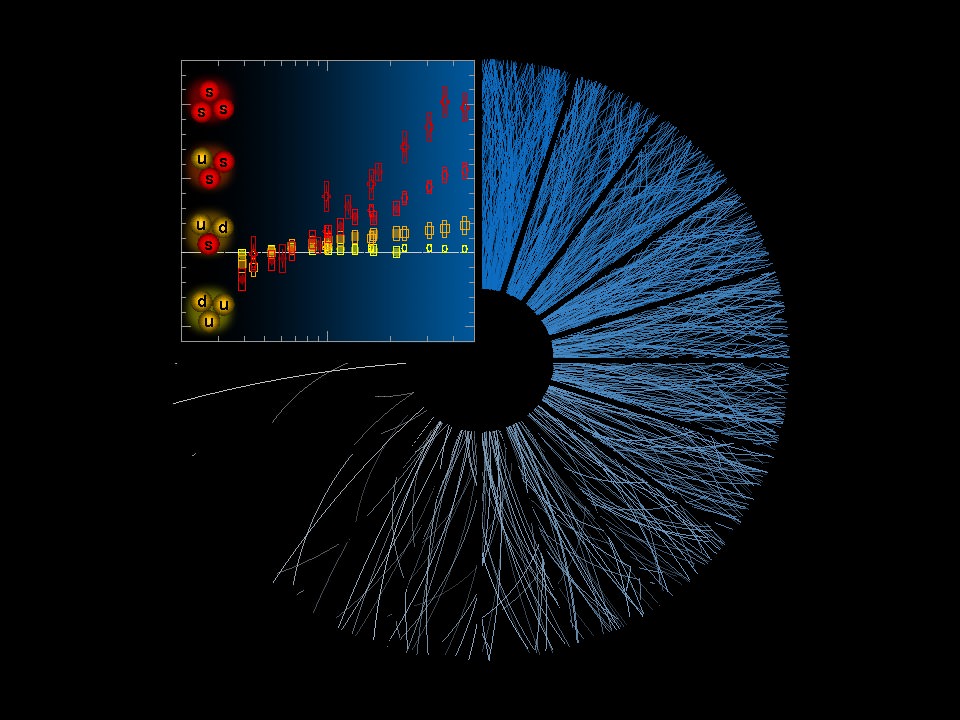There are some strange results being announced in the physics world lately. A fluid with a negative effective mass, and the discovery of five new particles, are all challenging our understanding of the universe.
New results from ALICE (A Large Ion Collider Experiment) are adding to the strangeness.
ALICE is a detector on the Large Hadron Collider (LHC). It’s one of seven detectors, and ALICE’s role is to “study the physics of strongly interacting matter at extreme energy densities, where a phase of matter called quark-gluon plasma forms,” according to the CERN website. Quark-gluon plasma is a state of matter that existed only a few millionths of a second after the Big Bang.
In what we might call normal matter—that is the familiar atoms that we all learn about in high school—protons and neutrons are made up of quarks. Those quarks are held together by other particles called gluons. (“Glue-ons,” get it?) In a state known as confinement, these quarks and gluons are permanently bound together. In fact, quarks have never been observed in isolation.

The LHC is used to collide particles together at extremely high speeds, creating temperatures that can be 100,000 times hotter than the center of our Sun. In new results just released from CERN, lead ions were collided, and the resulting extreme conditions come close to replicating the state of the Universe those few millionths of a second after the Big Bang.
In those extreme temperatures, the state of confinement was broken, and the quarks and gluons were released, and formed quark-gluon plasma.
So far, this is pretty well understood. But in these new results, something additional happened. There was increased production of what are called “strange hadrons.” Strange hadrons themselves are well-known particles. They have names like Kaon, Lambda, Xi and Omega. They’re called strange hadrons because they each have one “strange quark.”
If all of this seems a little murky, here’s the dinger: Strange hadrons may be well-known particles, because they’ve been observed in collisions between heavy nuclei. But they haven’t been observed in collisions between protons.
“Being able to isolate the quark-gluon-plasma-like phenomena in a smaller and simpler system…opens up an entirely new dimension for the study of the properties of the fundamental state that our universe emerged from.” – Federico Antinori, Spokesperson of the ALICE collaboration.
“We are very excited about this discovery,” said Federico Antinori, Spokesperson of the ALICE collaboration. “We are again learning a lot about this primordial state of matter. Being able to isolate the quark-gluon-plasma-like phenomena in a smaller and simpler system, such as the collision between two protons, opens up an entirely new dimension for the study of the properties of the fundamental state that our universe emerged from.”
Enhanced Strangeness?
The creation of quark-gluon plasma at CERN provides physicists an opportunity to study the strong interaction. The strong interaction is also known as the strong force, one of the four fundamental forces in the Universe, and the one that binds quarks into protons and neutrons. It’s also an opportunity to study something else: the increased production of strange hadrons.
In a delicious turn of phrase, CERN calls this phenomenon “enhanced strangeness production.” (Somebody at CERN has a flair for language.)
Enhanced strangeness production from quark-gluon plasma was predicted in the 1980s, and was observed in the 1990s at CERN’s Super Proton Synchrotron. The ALICE experiment at the LHC is giving physicists their best opportunity yet to study how proton-proton collisions can have enhanced strangeness production in the same way that heavy ion collisions can.
According to the press release announcing these results, “Studying these processes more precisely will be key to better understand the microscopic mechanisms of the quark-gluon plasma and the collective behaviour of particles in small systems.”
I couldn’t have said it better myself.

